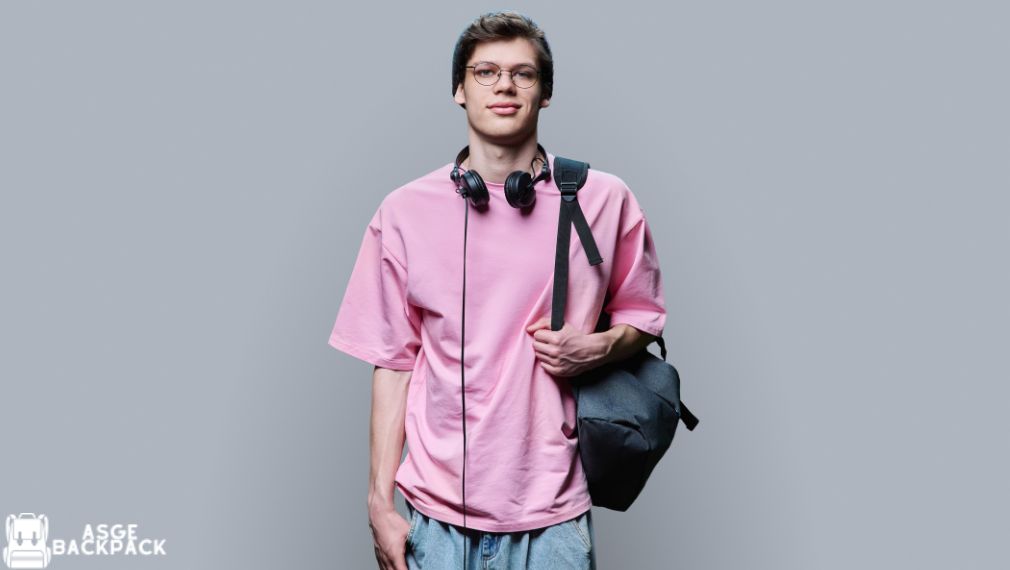Headphones are an essential accessory for music lovers, gamers, and professionals on the go. However, improper storage in a backpack can lead to tangled wires, physical damage, or even loss of functionality. Learning how to carry headphones in a backpack properly ensures they remain in excellent condition for longer.
ASGE backpacks are designed with compartments specifically tailored for safe headphone storage, helping you avoid common issues like cord tangling, pressure damage, and exposure to dirt or moisture.
Common Risks of Carrying Headphones in a Backpack
Tangled Wires
One of the biggest frustrations of carrying wired headphones in a backpack is tangled cords. When headphones are loosely stored, they can intertwine with other items, making them difficult to untangle and shortening the lifespan of the cable due to excessive bending.
Physical Damage
Headphones are fragile, and improper storage can lead to breakage. Placing them between heavy books, laptops, or other gear may cause pressure that damages internal wiring or cracks the headband of over-ear models.
Dirt and Moisture Exposure
Keeping headphones clean is crucial for optimal performance. Backpacks often collect dust, crumbs, and even moisture from water bottles or weather exposure, all of which can affect the functionality of your headphones.
Best Ways to Store Headphones in a Backpack
Using a Hard Case
A hard case is the best way to protect your headphones from impact and pressure. It provides a secure enclosure that prevents accidental damage.
- For Wired Headphones: Look for compact cases with built-in cord management to prevent tangling.
- For Wireless Headphones: Choose a case that accommodates your charging case or has an anti-scratch lining.
Utilizing Dedicated Pockets
Many ASGE backpacks feature dedicated compartments designed for electronics and accessories. Storing your headphones in a separate pocket keeps them protected and easily accessible.
- Benefits of dedicated storage: Prevents entanglement with other items.
- ASGE backpacks: Offer soft-lined compartments ideal for headphones and other small electronics.
Using a Cable Organizer for Wired Headphones
Wired headphones require extra care to prevent cord damage. A cable organizer helps keep wires neatly wrapped and tangle-free.
- Options include: Velcro wraps, silicone cord winders, and DIY solutions like wrapping them around a soft cloth before placing them in a pouch.
Protecting Wireless Headphones
Wireless earbuds like AirPods require special attention to prevent loss and battery drain.
- Storage tips: Keep them in their charging case when not in use.
- For over-ear wireless headphones: Fold them (if applicable) and place them in a padded case before storing them in a designated backpack compartment.
Additional Tips for Safe Headphone Storage
- Avoid placing heavy items on top of headphones to prevent crushing.
- Use waterproof pouches to protect against accidental spills and humidity.
- Regularly clean the storage area to prevent dust buildup that could damage internal components.
Why ASGE Backpacks Are Ideal for Carrying Headphones
ASGE backpacks are designed with modern storage needs in mind. Here’s why they’re a great choice for carrying headphones:
- Special compartments for electronics, including headphones, to keep them secure and organized.
- Lightweight and padded designs that absorb impact, protecting your gear from accidental drops or pressure damage.
- Secure zippers and anti-theft features to safeguard your valuable tech accessories.
The Bottom Line
Storing your headphones properly can prevent damage, extend their lifespan, and make them easier to access when needed. From using hard cases to dedicated backpack pockets, there are multiple ways to ensure your headphones stay safe and tangle-free.
For the ultimate storage solution, check out ASGE backpacks—designed to protect and organize your gear effortlessly.
Keep your headphones safe and tangle-free with ASGE backpacks—shop now!
